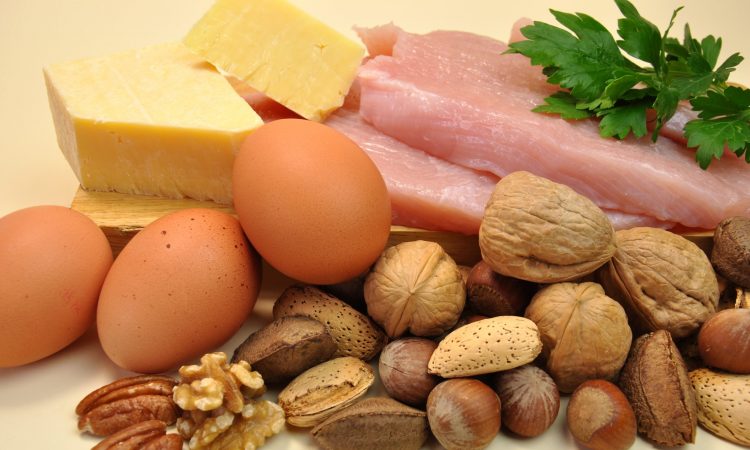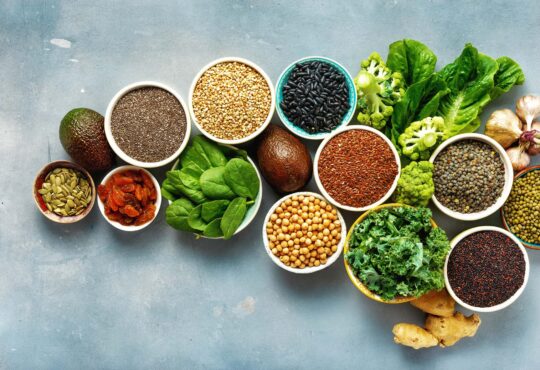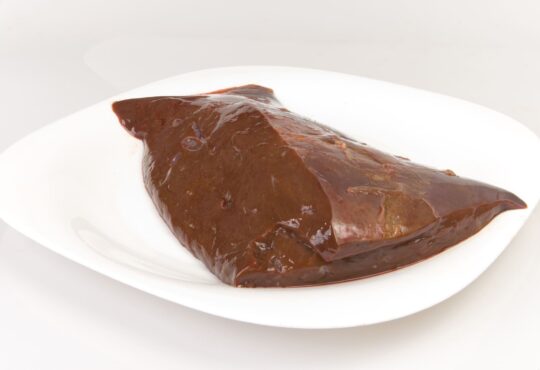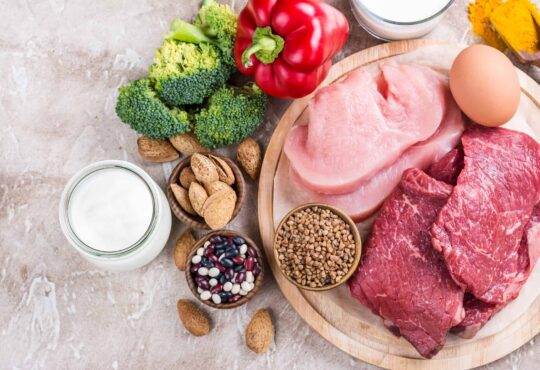
Many Americans worry about whether they eat enough protein – despite being the most well (and over) fed people in history.
And despite a little-known Danish nutritionist discovering the truth over 100 years ago.
And proving it under extreme circumstances: World War I.
Mikkel Hindhede convinced the Danish government even hard-working men did not require more than 30-40 grams of protein per day.
(For context, one-Quarter pounder with cheese contains 29 grams of protein.)
Therefore, Denmark killed off most of their cattle and pigs and had people eat the grains those animals once consumed.
The result? During World War I, Britain blockaded Central Europe, causing about 400,000 Germans to die from starvation. As a neutral country, Denmark was not the target of the blockade but was also unable to import food, just like Germany. However, because they grew enough grains, the Danish people did not die as the Germans did. Hindhede calculated the shift from eating lots of pork to mainly grains saved the lives of 6,300 Danes.
Despite the Avoidance of War-Time Famine in Denmark, Science Continued to Overemphasize the Role of Protein
From about 1950 to 1975, the United Nations claimed there was a “protein gap” between people in wealthy and poor nations.
When there was a famine in Bangladesh, Ethiopia or some other place where people suffered starvation brought on by war or revolution, you could count on the news media showing you heart-wrenching photos of stick-thin children with huge, bloated bellies.
That breakdown in their abdominal cell walls is kwashiorkor disease, and experts believed it was caused not just by long-term hunger but, more specifically, a deficiency of protein.
In the mid-1970s, however, nutritionists looked more closely at the evidence and decided people really didn’t need as much protein as they (except Mikkel Hindhede) used to believe.
Right Now, the Dietary Reference Index Recommends Eating 0.8 Grams of Protein Per Pound of Body Weight Per Day
That’s 0.36 grams per pound of body weight.
That’s 72 grams for a man weighing 200 pounds.
That’s about 2 1/2 Quarter pounders with cheese.
For the entire day.
I don’t know about you, but – in the days when I still ate at the Golden Arches (over now) – if I wasn’t hungry enough to eat two-Quarter pounders with cheese, I wasn’t hungry enough to stop and eat anything.
Remember, you may also eat eggs (6 grams each) and bacon (3 grams per slice) for breakfast.
And you probably eat some kind of meat sandwich for lunch.
Clearly, the average American is getting more protein than experts advise.
We Do Need Protein for Growth, but How Much?
What kind of people grows the most?
Obviously, it’s infants. From birth to five months of age, they double in size. And what “perfect,” natural food did evolution design for babies?
Breast milk.
And human breast milk is quite low in protein. The protein in human breast milk is only about 6%.
For comparison, beef is around 26% protein. Eggs are around 35%.
Yet Bodybuilders, Weight Lifters and Many Other Athletes Believe They Must Gorge on Protein to Grow New Muscle
A pound of muscle tissue requires around 100 grams of protein.
Realistically, a man lifting weights should be happy if he gains 1-2 pounds of new muscle every month.
So, that means a bodybuilder needs just 200 extra grams of protein to grow their muscles – over an entire month.
That’s less than 7 grams per day. Just one egg more than a nonactive man requires.
Clearly, it’s NOT a lack of dietary protein that is slowing muscle growth in weightlifters.
You can’t exercise enough in one day to convert the protein in even one-Quarter pounder with cheese into pure muscle. So the extra protein athletes are consuming is just going to waste.
Yet bodybuilders are pushed to consume huge quantities of protein-rich foods, including expensive supplements.
That’s just to grow an additional 1-2 pounds of muscle every month.
While babies manage to double their total weight on only 6% protein.
Meanwhile, the average American eats a diet that’s 15% protein – 3 times as much as what babies consume.
And most of us are growing only around the middle – and it’s NOT new muscle.
The Dangers of Eating Too Much Protein
But, no problem, right? Your body just gets rid of it. Right?
Wrong.
1. Excess protein spikes your insulin. Therefore, excess protein puts you at risk for insulin resistance and Type 2 diabetes.
2. Excess protein jacks up your Insulinlike Growth Factor-1. You need some IGF-1 to repair body tissues, but when you’re an adult, you don’t want to encourage more growth than necessary. IGF-1 is strongly associated with cancer risk.
3. Excess protein increases your risk of kidney damage because it’s your kidneys that must eliminate excess protein from your body. That puts additional stress on your kidneys, leading to the destruction of their fragile tissues.
The overconsumption of protein in the United States may well be one reason why chronic kidney disease is becoming much more common. Experts estimate one out of eight Americans have CKD but don’t know it. And, most won’t, until their kidneys fail and they go on renal dialysis.
Stop Stressing About Protein
There’s a reason why you don’t know anybody who suffers from the underconsumption of protein.
You don’t need to gorge yourself with protein-rich foods.
If you eat enough real foods (NOT soda, energy drinks or candy bars, but real food), so you don’t feel hungry – you will get plenty of protein.
https://www.youtube.com/watch?v=uw_j5NiZk50
I Delimaris. Adverse Effects Associated with Protein Intake above the Recommended Dietary Allowance for Adults. ISRN Nutr. 2013 Jul 18;2013:126929.
https://www.aworkoutroutine.com/how-much-muscle-can-you-gain/
https://www.mnn.com/food/healthy-eating/stories/egg-nutrition-get-the-facts
https://www.healthline.com/nutrition/foods/beef
https://www.ncbi.nlm.nih.gov/pubmed/392766
https://www.ncbi.nlm.nih.gov/pmc/articles/PMC3586783/
https://www.youtube.com/watch?v=7NW32vLq340
https://www.google.com/search?rlz=1C1GCEA_enUS776US776&ei=3k9bXdbxE9DwsQXi5b2oCg&q=how+many+grams+of+protein+in+one+slice+of+bacon&oq=how+many+grams+of+protein+in+one+slice+of+bacon&gs_l=psy-ab.3..0j0i22i30l4.46710.50899..51143…0.2..0.222.2380.0j15j2……0….1..gws-wiz…….0i71.g_y47slE_C0&ved=0ahUKEwjW2Mj7qJDkAhVQeKwKHeJyD6UQ4dUDCAo&uact=5
https://www.google.com/search?rlz=1C1GCEA_enUS776US776&ei=J09bXbSIEdKisAX3r4zQBA&q=how+many+grams+of+protein+in+one+egg&oq=how+many+grams+of+protein+in+one+egg&gs_l=psy-ab.3..0l3j0i22i30l7.177819.181305..181638…0.2..0.238.2720.1j18j1……0….1..gws-wiz…….0i71j0i70i251.VZW4cwEE-0U&ved=0ahUKEwj0t6SkqJDkAhVSEawKHfcXA0oQ4dUDCAo&uact=5
https://www.eatthismuch.com/food/nutrition/quarter-pounder-with-cheese,5059/
https://babel.hathitrust.org/cgi/pt?id=mdp.39015082605687&view=1up&seq=401
https://www.youtube.com/watch?v=uw_j5NiZk50
https://en.wikipedia.org/wiki/Big_Mac
https://www.ncbi.nlm.nih.gov/pubmed/27566234
https://www.drmcdougall.com/misc/2012nl/jul/lessons.htm







